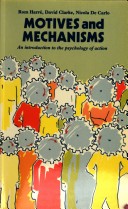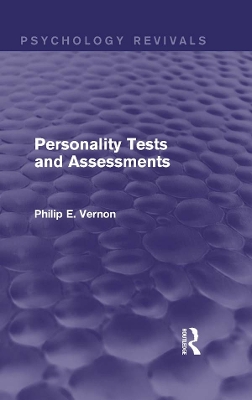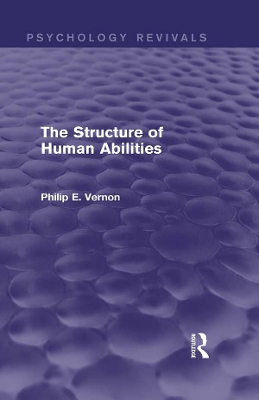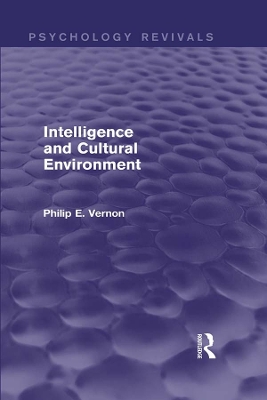Psychology Revivals
6 total works
The Psychology and Education of Gifted Children
by Philip E. Vernon, etc., and Et Al
Originally published in 1977, this book looks at the problem of educating highly intelligent and gifted children, which it felt was of paramount importance to modern society. In the 1970s education increasingly focused on average pupils, and often made excellent provision for handicapped children, the authors felt it all the more important for teachers, parents and educationalists generally to be made aware of the special needs of the bright and talented, and how they could best be catered for. In this book Professor Vernon and his two co-authors discuss the provision of special facilities for the education of these children at the time, particularly with reference to the UK and Canada. The serious losses to society when the gifted and specially talented are ignored or repressed are pointed out and the merits and difficulties of alternative schemes are underlined. Detailed consideration is given to the psychological origins and nature of intelligence (both genetic and environmental) and of creativity and special talents (artistic and scientific), and also to available tests and other techniques for identifying exceptionally able children. The book was particularly intended to help teachers and educational administrators of the time, together with the parents of very bright children.
Originally published in 1964, the aim of this book was to analyse the psychological processes involved in understanding personality, and to consider how the psychologist could help in making more accurate assessments.
Professor Vernon discusses in detail the scientific status of psychoanalytic and other 'depth' theories of motivation, the value of different types of psychotherapeutic treatment and counselling, the influence of upbringing on the development of personality, and the effectiveness of projective techniques. He also examines the reasons for the highly variable results obtained with personality tests and questionnaires.
As well as providing a balanced review of theories of personality and of various types of test, this work made a fresh contribution to developing improved techniques of assessment.
As the first introductory statement of the `new psychology', Motives and Mechanisms, originally published in 1985, aims to bring the study of human action to the forefront of the subject. Like any science, the practice of psychology is very much influenced by the hidden assumptions of its practitioners. The argument put forward in this important text shows how these assumptions can be brought out by comparing psychology with the natural sciences and with common-sense understanding.
In pursuing the integration of traditional research methods with a new style of investigation, the basic principle is that social structures and mental structures are in reciprocal relation with one another because each is involved in the creation of the other. By adopting this principle social structures become the basis for research into the cognitive and emotional organization of mind. The authors devote two key chapters to the central question that underlies this stance: are human actions and human actors' products of internal processes, such as those described by Freud, or of external social forces, of the kind described by Mead?
Originally published in 1953 this book provided the first comprehensive account of methods of personality assessment by a British author. It starts with a short survey of personality theory, pointing out the difficulties in any method of testing or assessment. Next it describes the weaknesses of the common interview method. (Throughout the emphasis is on methods which are usable in educational or vocational guidance and selection, not on methods which are mainly of scientific interest.) Thereafter it takes up each main type of technique – tests based on physique or psychological measures, on expressive movement such as gestures and handwriting, tests of behaviour (including War Office Selection Board ‘house party’ methods), ratings and rating scales, questionnaires, and so-called projective techniques. The evidence for or against each test or method is surveyed and numerous references provided for relevant literature. Illustrative excerpts are given of many of the more promising tests, and some pictorial illustrations. British work in this field at the time is covered completely, and an attempt is made to provide a fair summary of the main contributions of American and other psychologists of the day.
First published in 1950, this revised edition of The Structure of Human Abilities was published in 1961, but remained largely unchanged from the original save for an additional supplement on the developments in factorial work on human abilities from 1950-1959.
Much research had been carried out during the years leading up to publication, in England and America, into mental abilities; and modern methods of statistical treatment, especially factor analysis, had been increasingly used.
It was felt that the mass of diverse material was apt to confuse the student of psychology of the time, especially as the results of such research were often apparently conflicting. Professor Vernon, one of the leading experts in this branch of psychology, sifted the material and attempted to provide a consistent picture of our mental structure.
Originally published in 1969, Intelligence and Cultural Environment looks at the concept of intelligence and the factors influencing the mental development of children, including health and nutrition, as well as child-rearing practices. It goes on to discuss the application of intelligence tests in non-Western countries and includes both British and cross-cultural studies to illustrate this.
Inevitably a product of the time in which it was written, this book nonetheless makes a valuable contribution to intelligence theory as we know it today.




